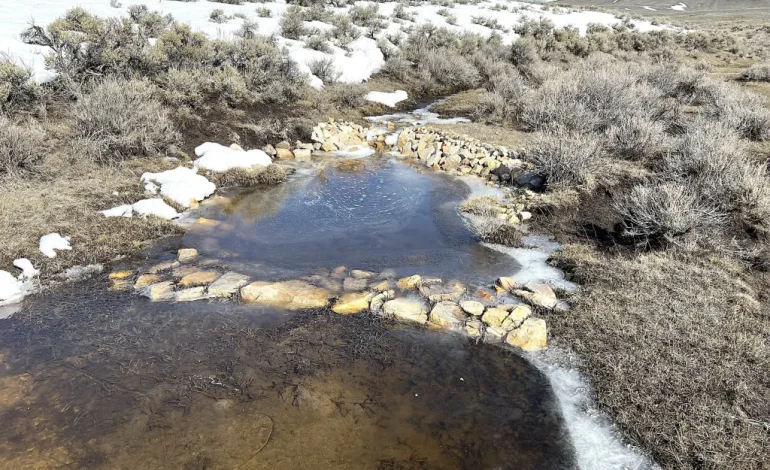Conservation Effort Uses Simple Rock Structures to Restore Sagebrush Habitat in Western Wyoming

A grassroots conservation effort in western Wyoming is using a low-tech, labor-intensive method to protect one of the region’s most ecologically valuable landscapes: its wet meadows.
These narrow, moisture-rich areas tucked into gulches within the broader sagebrush steppe serve as vital ecological arteries in an otherwise arid environment — and they are under threat from erosion.
To combat this, volunteers and conservationists are installing “Zeedyk structures,” a technique named after restoration specialist Bill Zeedyk. The method involves placing rocks in specific arrangements to slow water flow and stabilize soil in small creeks and drainages. While the concept is simple, it has shown remarkable success in preventing erosion and supporting biodiversity.
“These areas are pretty small, but they’re very important,” said Tom Christiansen, a retired sage grouse coordinator with the Wyoming Game and Fish Department. “They’re the grocery stores of the landscape.”
Christiansen likens unchecked erosion in these areas to an untreated wound.
“Each of these [structures] is a stitch,” he told volunteers gathered at White Acorn Ranch near South Pass in June.
The ranch, located within Wyoming’s “Golden Triangle” — a region known for its intact sagebrush habitat — is home to ongoing restoration efforts.
The goal of the Zeedyk method is to stop “headcuts,” or advancing erosion fronts, before they deepen and transform grassy bottoms into barren gullies. By placing rocks in forms such as “one rock dams,” “zuni bowls,” and “rock mulch rundowns,” water is slowed and allowed to soak into the ground, supporting vegetation and recharging shallow water tables.
Though modest in appearance, these structures carry significant ecological weight. Healthy wet meadows are essential for wildlife such as sage grouse, insects, and grazing animals, and they also help maintain landscape resilience in the face of drought and climate change.
The June volunteer event drew participants from around the state, including state biologists, families, and conservation-minded residents. Some attendees had learned the method from Zeedyk himself during previous workshops.
“There’s over 20 structures between here and where that slope toes off,” Christiansen noted, gesturing down a draw. “Each of these, on its own, may seem insignificant. But when you start doing thousands across the West, there is real significance.”
The project is backed by private and public contributions. Stones used for construction were donated by a sage grouse hunter from Washington, and the initiative has been supported by programs such as the Sage Grouse Initiative from the Natural Resources Conservation Service.
Long-term monitoring has confirmed the effectiveness of the technique. Even after extreme weather events, such as the heavy snowpack during the winter of 2022–23, the structures have remained largely intact.
The original story by Mike Koshmrl at WyoFile.









The latest news in your social feeds
Subscribe to our social media platforms to stay tuned